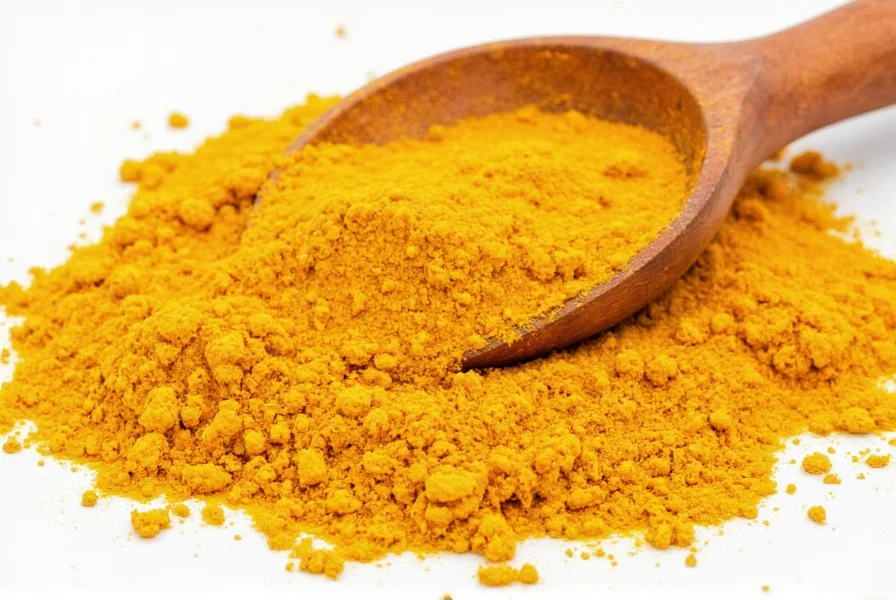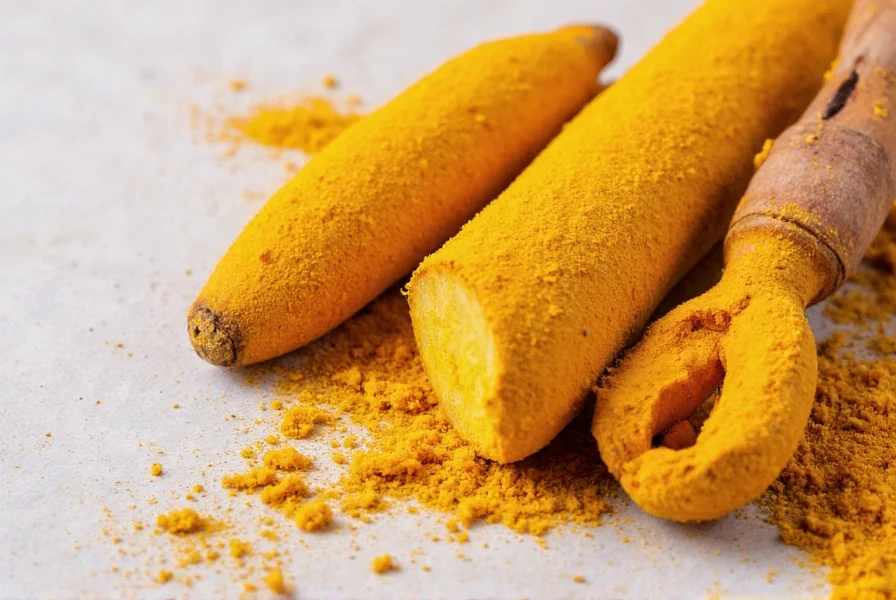Known as the golden spice, turmeric has been enhancing dishes across global cuisines for centuries. This vibrant rhizome not only adds a warm, earthy flavor but also provides striking color and potential health benefits when used properly in cooking. Understanding how to incorporate turmeric effectively can transform your culinary creations while maximizing its properties.
Understanding Turmeric Forms for Cooking
Turmeric comes in several forms, each with specific culinary applications. Ground turmeric offers convenience and consistent flavor distribution, while fresh turmeric root provides a brighter, more complex taste profile. When learning how to use fresh turmeric in cooking, remember it's more potent than its dried counterpart—typically requiring about one inch of fresh root for every 1/4 teaspoon of ground spice.
| Turmeric Form | Best Culinary Uses | Substitution Ratio |
|---|---|---|
| Ground turmeric | Dry spice blends, long-cooking dishes | 1 part ground = 3 parts fresh |
| Fresh turmeric root | Raw applications, quick-cooking dishes | 1 inch fresh = 1/4 tsp ground |
| Turmeric paste | Marinades, dressings, beverages | 1 tsp paste = 1/2 tsp ground |
| Turmeric powder | Coloring, spice mixes | 1/4 tsp for color in 4 servings |
Optimal Timing for Adding Turmeric
The timing of turmeric addition significantly affects both flavor and color development. For best ways to incorporate turmeric into daily meals, add ground turmeric early in the cooking process to allow its flavors to mellow and integrate. Fresh turmeric works best when added during the last 5-10 minutes of cooking to preserve its brighter notes. When making turmeric recipes for beginners, start with small amounts—1/4 teaspoon per serving—and adjust to taste, as turmeric can become bitter when overused.
Perfect Pairings for Turmeric
Turmeric shines when combined with complementary ingredients that enhance both flavor and bioavailability. The classic combination of turmeric with black pepper increases curcumin absorption by up to 2,000%. For cooking with turmeric without staining surfaces, mix it with oil first before adding to other ingredients. Excellent flavor partners include:
- Lemon or lime juice to brighten earthy notes
- Ginger for enhanced warmth and complexity
- Coconut milk to create creamy, balanced curries
- Cumin and coriander for authentic Indian flavor profiles
- Honey or maple syrup for sweet applications
Practical Applications in Everyday Cooking
Integrating turmeric into your cooking routine doesn't require elaborate techniques. For how much turmeric to add to recipes, begin with modest quantities and adjust based on your preference. Stir a pinch into scrambled eggs or omelets for golden hue and subtle flavor. Add 1/2 teaspoon to vinaigrettes for vibrant salad dressings. When making rice or quinoa, include a 1-inch piece of fresh turmeric root in the cooking liquid for beautiful color and mild flavor.
One of the most popular health benefits of culinary turmeric use comes from golden milk—a simple blend of warm milk (dairy or plant-based), 1/2 teaspoon turmeric, a pinch of black pepper, and optional sweetener. This soothing beverage demonstrates how to incorporate turmeric into daily wellness routines through enjoyable culinary applications.

Avoiding Common Turmeric Mistakes
Many home cooks encounter challenges when first using turmeric. The most frequent error is using excessive amounts, which creates bitterness rather than the desired warm, earthy flavor. Another common issue involves staining—turmeric's potent color can discolor surfaces and utensils. To prevent this, always clean cutting boards and knives immediately after use, and consider using glass or stainless steel containers rather than plastic.
When exploring turmeric spice usage in Indian cuisine, remember that turmeric serves primarily as a background note rather than the dominant flavor. Authentic Indian cooking typically uses turmeric in combination with other spices, where it contributes to both flavor complexity and the characteristic golden color of many dishes without overwhelming other elements.
Storage Techniques for Maximum Freshness
Proper storage maintains turmeric's potency and extends its shelf life. Keep ground turmeric in an airtight container away from light and heat, where it will remain potent for 6-12 months. Fresh turmeric root lasts 2-3 weeks when stored in the refrigerator wrapped in a paper towel inside a sealed container. For longer storage, freeze fresh turmeric pieces for up to six months—simply grate frozen pieces directly into dishes without thawing.

Expanding Your Turmeric Culinary Repertoire
Once comfortable with basic applications, experiment with more creative uses. Incorporate turmeric into baked goods like muffins or breads for subtle color and flavor. Use it to create vibrant pasta dough or homemade tortillas. For a refreshing twist, add a small pinch to fruit smoothies or lemonade. When developing your how to use turmeric in food skills, remember that less is often more—turmeric should enhance rather than dominate your dishes.
What's the recommended daily amount of turmeric for cooking?
For culinary use, 1/4 to 1/2 teaspoon of ground turmeric per serving is generally sufficient. When using fresh turmeric, about 1 inch of root provides equivalent flavor and color. Consuming turmeric with black pepper and healthy fats enhances absorption of its active compounds.
Can turmeric be used in sweet dishes and desserts?
Yes, turmeric works well in sweet applications when used sparingly. Try adding 1/8 to 1/4 teaspoon to golden milk, turmeric-infused honey, or baked goods like muffins and cookies. Pair it with complementary flavors like ginger, cinnamon, honey, and citrus for balanced sweet dishes that showcase turmeric's warm notes without bitterness.
How can I prevent turmeric from staining my kitchen surfaces?
To minimize staining, always clean surfaces immediately after contact with turmeric. Use glass or stainless steel cutting boards instead of wood or plastic. When handling fresh turmeric, wear gloves and work on surfaces you can easily clean. Mixing turmeric with oil before adding to other ingredients can also help contain its vibrant color.
Does cooking affect turmeric's health benefits?
Moderate cooking actually enhances turmeric's bioavailability. Heating turmeric in oil or with black pepper increases absorption of curcumin, its active compound. However, prolonged high-heat cooking can degrade some beneficial compounds, so adding turmeric during the middle of the cooking process provides the best balance of flavor development and nutrient retention.
What are good substitutes if I don't have turmeric?
While no substitute perfectly replicates turmeric's unique flavor and color, saffron provides similar golden color (though much more expensive). For color only, annatto or paprika can work in some dishes. For earthy flavor without the yellow hue, consider using a small amount of curry powder or a combination of ginger and mustard powder, though these won't provide the same health benefits.











 浙公网安备
33010002000092号
浙公网安备
33010002000092号 浙B2-20120091-4
浙B2-20120091-4